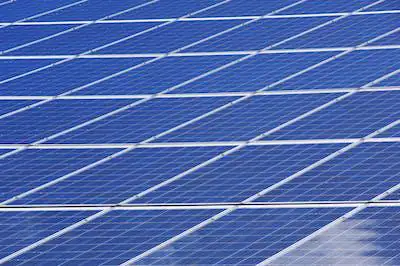Traditional Solar Panels: The OG of solar roofs. These familiar blue rectangles are mounted on top of your existing roof using racking systems. They come in two main flavors:
Crystalline Silicon Panels: The most common and efficient type, further divided into:
- Monocrystalline: Composed of pure silicon crystals, these boast the highest efficiency (15-22%) but are pricier.
- Polycrystalline: Made from multiple silicon crystals, offering a budget-friendly option with slightly lower efficiency (13-17%).
- Crystalline Silicon Solar Panels
Thin-Film Panels: Lighter and more flexible than silicon panels, these are ideal for curved roofs or historical buildings. However, their efficiency is lower (6-13%).
ThinFilm Solar Panels
Pros: These panels are well-established, reliable, and have a longer lifespan (25-30 years). They're also modular, allowing custom installations suited to your roof size and energy needs.
Cons: Traditional panels can be bulky and aesthetically unappealing on some roofs. Installation requires expertise and might not be suitable for fragile roofs.
In-Roof Solar: Seeking a sleeker, integrated look? In-roof solar panels replace your existing roofing materials, seamlessly blending solar technology with your roof's aesthetics. The panels are installed directly onto the roof battens, creating a flush, low-profile finish.
Pros: In-roof systems offer superior aesthetics, enhanced weatherproofing, and potentially boost your home's resale value.
Cons: Installation is more complex and expensive than traditional systems. Compatibility with existing roof types might be limited, and repairs or replacements can be tricky.
Solar Shingles: Imagine your entire roof generating power! Solar shingles are individual photovoltaic tiles designed to mimic traditional roofing materials like slate, asphalt, or clay. They come in various styles and colors, allowing for a customized, aesthetically pleasing solar roof.
Pros: Solar shingles offer unparalleled visual appeal, integrated functionality, and potential hail and fire resistance.
Cons: The upfront cost is significantly higher than traditional panels. Efficiency can be lower, and individual shingle replacements can be more cumbersome.
Tesla Solar Roof: A unique entry in the solar roof arena, Tesla Solar Roof tiles are composed of textured glass with embedded photovoltaic cells. They mimic the look of traditional slate or Tuscan clay tiles, offering a sleek, high-end aesthetic.
Pros: Tesla Solar Roof boasts exceptional durability, hailing, and fire resistance. Its integrated powerwall battery storage system can enhance energy independence.
Cons: The cost is considerably higher than other solar roof options. Installation is limited to Tesla-certified crews, and customization options are restricted.
Beyond Panels: Emerging technologies are pushing the boundaries of solar roofs. Here's a glimpse into the future:
Building-integrated photovoltaics (BIPV): These seamlessly integrate solar cells into building materials like roof tiles, facades, and windows.
Organic photovoltaics (OPV): Flexible and lightweight, these organic-based solar cells can be applied to diverse surfaces, opening up exciting possibilities for unconventional roof shapes and materials.
Choosing the Right Solar Roof:
With so many options, selecting the perfect solar roof depends on your priorities:
Budget: Traditional panels offer the most affordable entry point, while Tesla Solar Roofs and solar shingles represent a significant investment.
Aesthetics: In-roof and solar shingle options provide a sleek, integrated look, while traditional panels might not complement every roof style.
Performance: Crystalline silicon panels offer the highest efficiency, while thin-film panels might be suitable for limited roof space.
Roof suitability: Consider your roof's age, material, and structural integrity before choosing a system.
Remember, a qualified solar installer can assess your needs and recommend the best type of solar roof for your home.
Investing in a solar roof is a wise decision for your wallet and the planet. By understanding the diverse options available, you can harness the power of the sun to create a sustainable, energy-efficient haven for yourself and future generations.
Additional Tips:
Research government incentives and rebates available for solar installations in your area.
Compare quotes from multiple qualified solar installers before making a decision.
Factor in your long-term energy savings and environmental impact when evaluating the cost of a solar roof.

